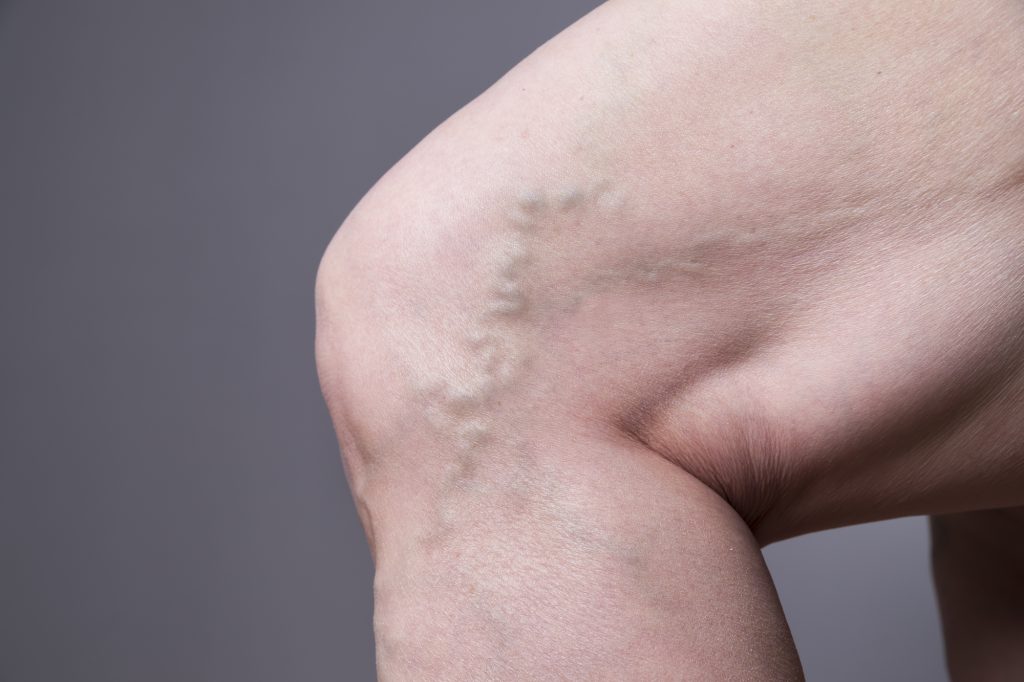Can You Treat Varicose Veins if You Have Diabetes?
 You might be ready to be rid of your varicose veins, but if you’ve been diagnosed with diabetes, can you go through with vein treatments?
You might be ready to be rid of your varicose veins, but if you’ve been diagnosed with diabetes, can you go through with vein treatments?
Not only is the answer “yes,” but having diabetes may make it even more important to get varicose veins treated now.
Understanding Varicose Veins
Varicose veins are a vascular condition in which swollen, twisted veins appear through the skin, primarily in the legs. Varicose veins happen when the valves within veins become weakened or damaged, allowing blood to pool in places. You may be uncomfortable with how these visible veins look, but they also come with physical symptoms such as pain, discomfort, aching, and, in some cases, even more severe complications.
Diabetes and Vascular Health
Diabetes is a chronic medical condition resulting from your body’s inability to properly regulate blood sugar (or glucose). There are two main types of diabetes, and while both types can influence vascular health, Type 2 diabetes is more commonly associated with varicose veins.
While diabetes doesn’t cause varicose veins, at least not directly, diabetes and varicose veins can be a worrisome combination. Because both affect the vascular system, they put your health at risk. Diabetes can affect blood circulation, weaken blood vessels, and increase inflammation, all of which can potentially worsen varicose veins and heighten the risks associated with them.
In addition, weight gain, often associated with both conditions, can have a negative impact. A higher body weight places additional pressure on the veins, particularly those in the legs, which can contribute to the development or worsening of varicose veins.
The Benefits of Treating Varicose Veins for Diabetics
If you have diabetes, you should make managing your condition one of your top priorities for your health. But you may also want to consider treating your varicose veins.
Improved Circulation
Both diabetes and varicose veins impair optimal blood circulation. Treating your veins removes the affected veins, resulting In less blood pooling in the legs. This has the potential to help improve the peripheral leg pain associated with both conditions.
Enhanced Mobility
Varicose veins can mean painful, achy legs, which can make it hard to be active. Treating veins often means improved circulation and reduced pain, which, in turn, can make it easier to maintain an active lifestyle, something that is crucial for managing your diabetes.
Skin Concerns
We cannot stress enough how severe of a concern skin ulcers are if you have diabetes. The condition makes you more susceptible to injury and, at the same time, reduces sensation and blood flow to the area, meaning slow wound healing and an increased infection risk. Treating varicose veins can prevent or minimize skin changes and ulcers, reducing the risks of infections and facilitating faster wound healing.
Reduced Vascular Risks
By addressing varicose veins, you can lower the risk of serious complications like blood clots, DVT, and CVI, which could have severe consequences for diabetics.
Better Quality of Life
Don’t minimize the importance of this improvement to your well-being. Varicose vein treatment can alleviate long-term discomfort, and it can mean a significant positive change in the appearance of your legs. Improving your vein health and your self-esteem can give you the ability to focus on managing your diabetes and living a healthy lifestyle.
Are Vein Treatments Safe with Diabetes?
The good news? Most varicose vein treatments are safe for people with diabetes. If you are interested, it is a good idea to seek out a vein treatment provider that offers multiple types of vein treatments so that you can explore your options and see which method is best for you. Equally important, make sure to choose an expert with extensive experience in vein therapies, especially if you have additional health conditions such as diabetes.
If you have questions or if it’s time to get treatment for your visible veins, contact us today.



